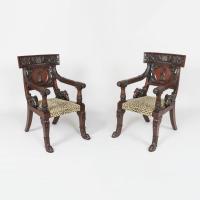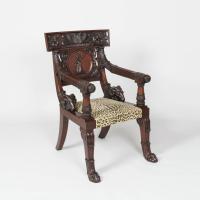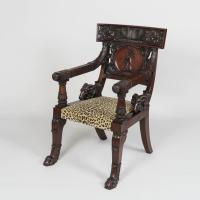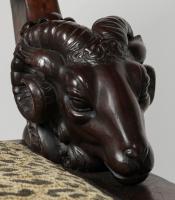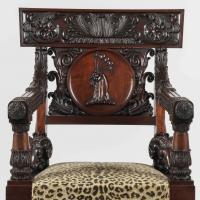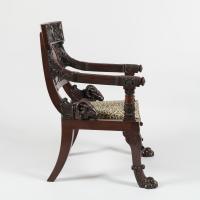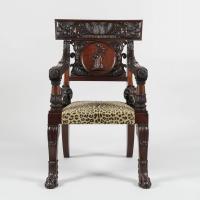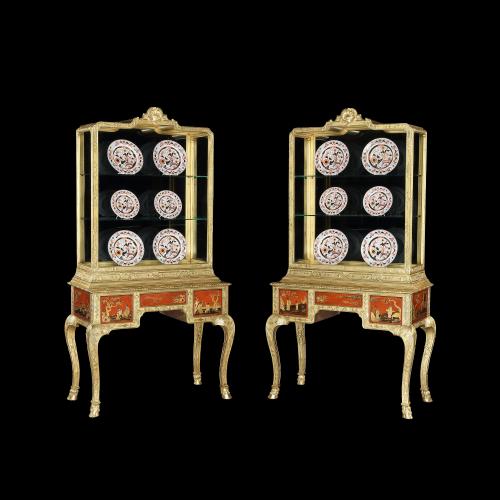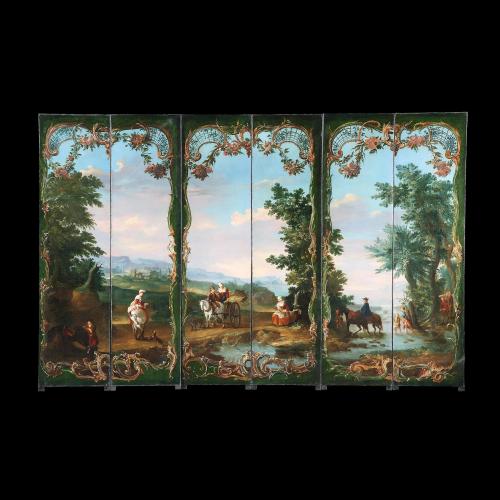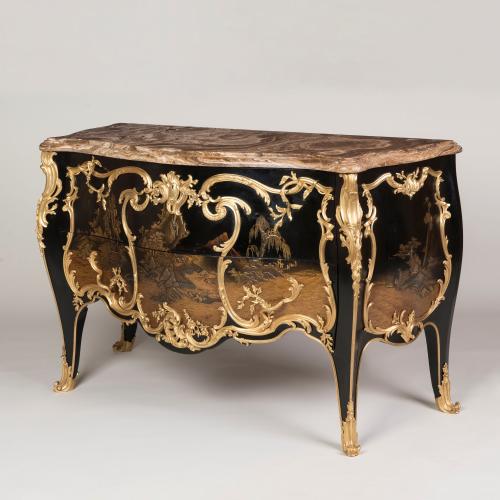
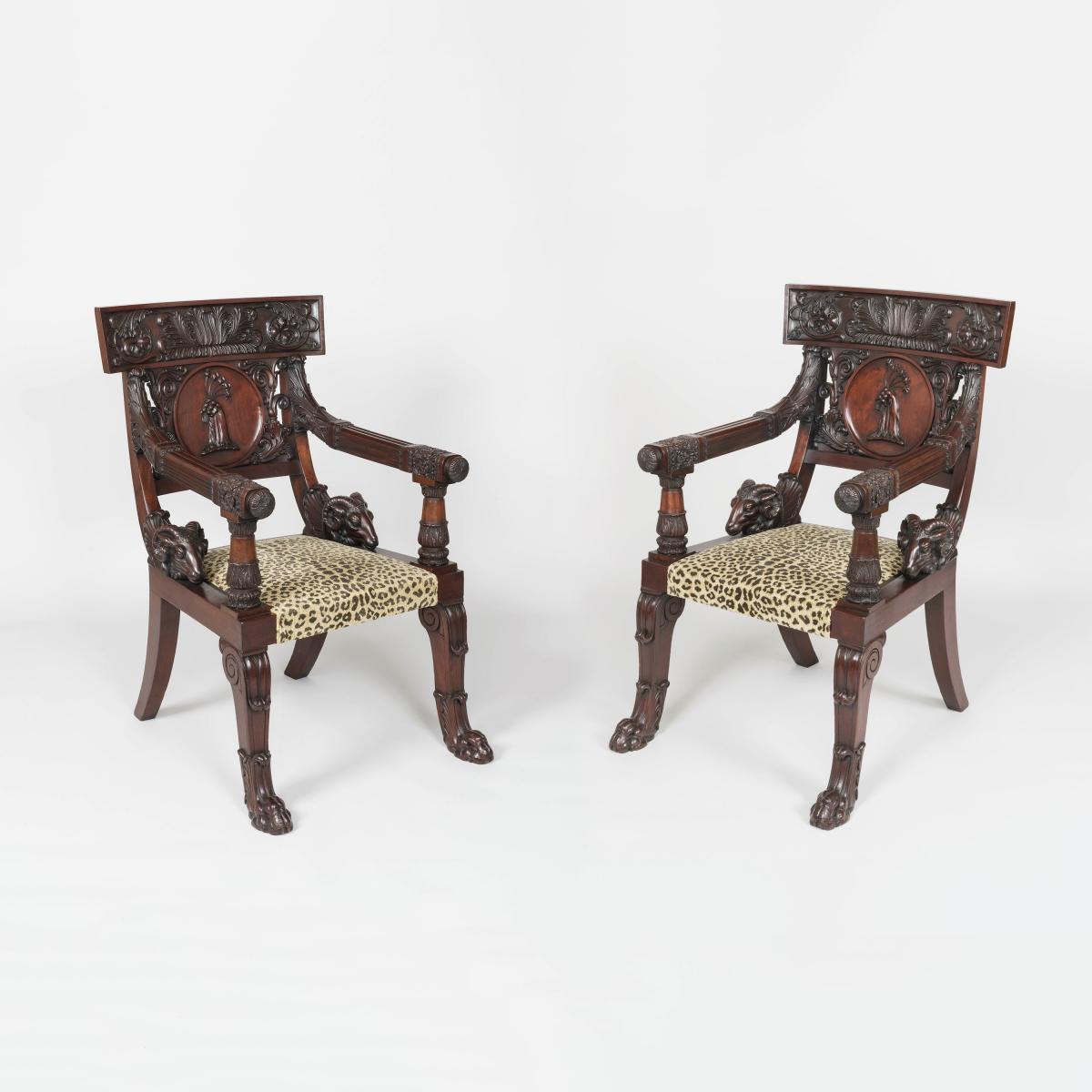
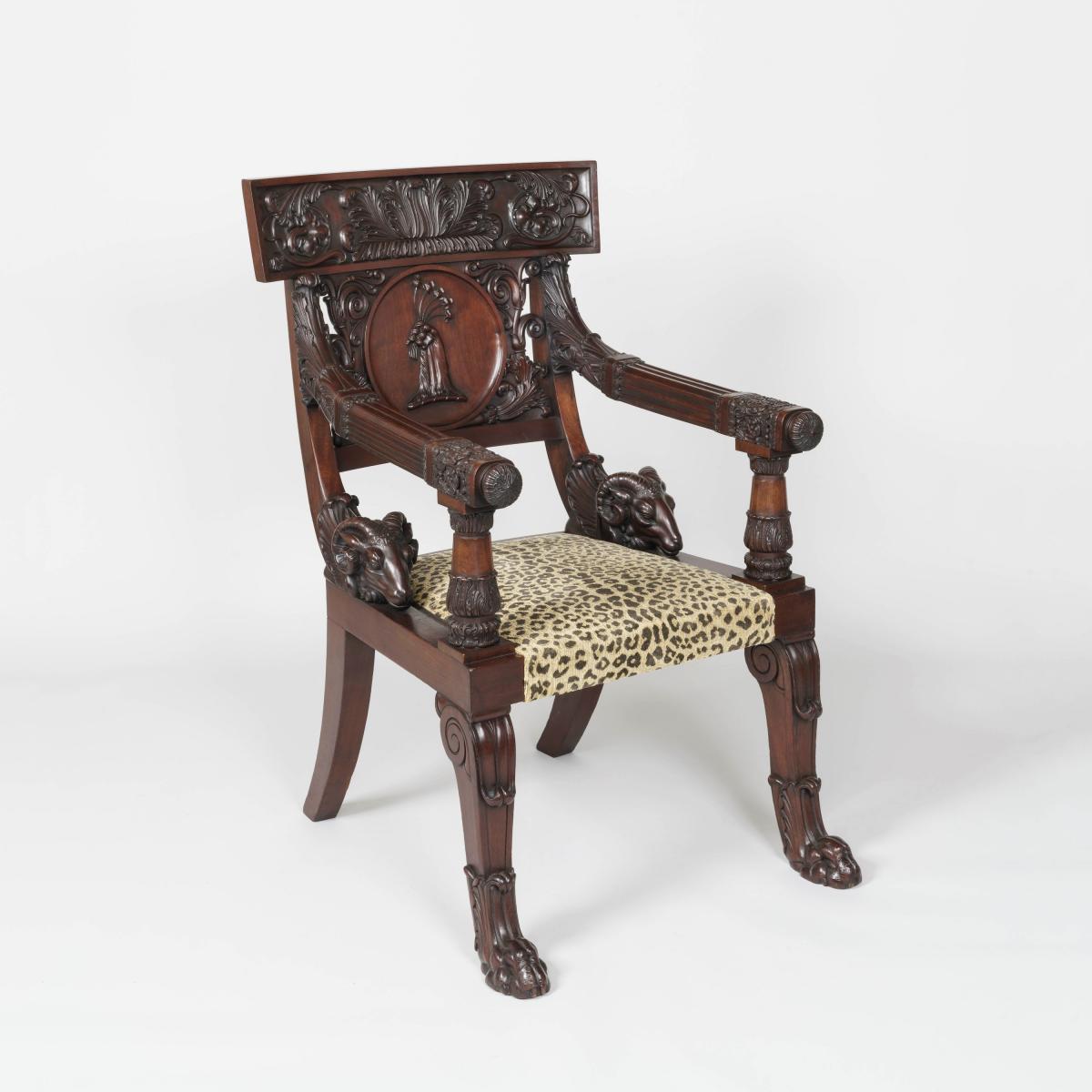
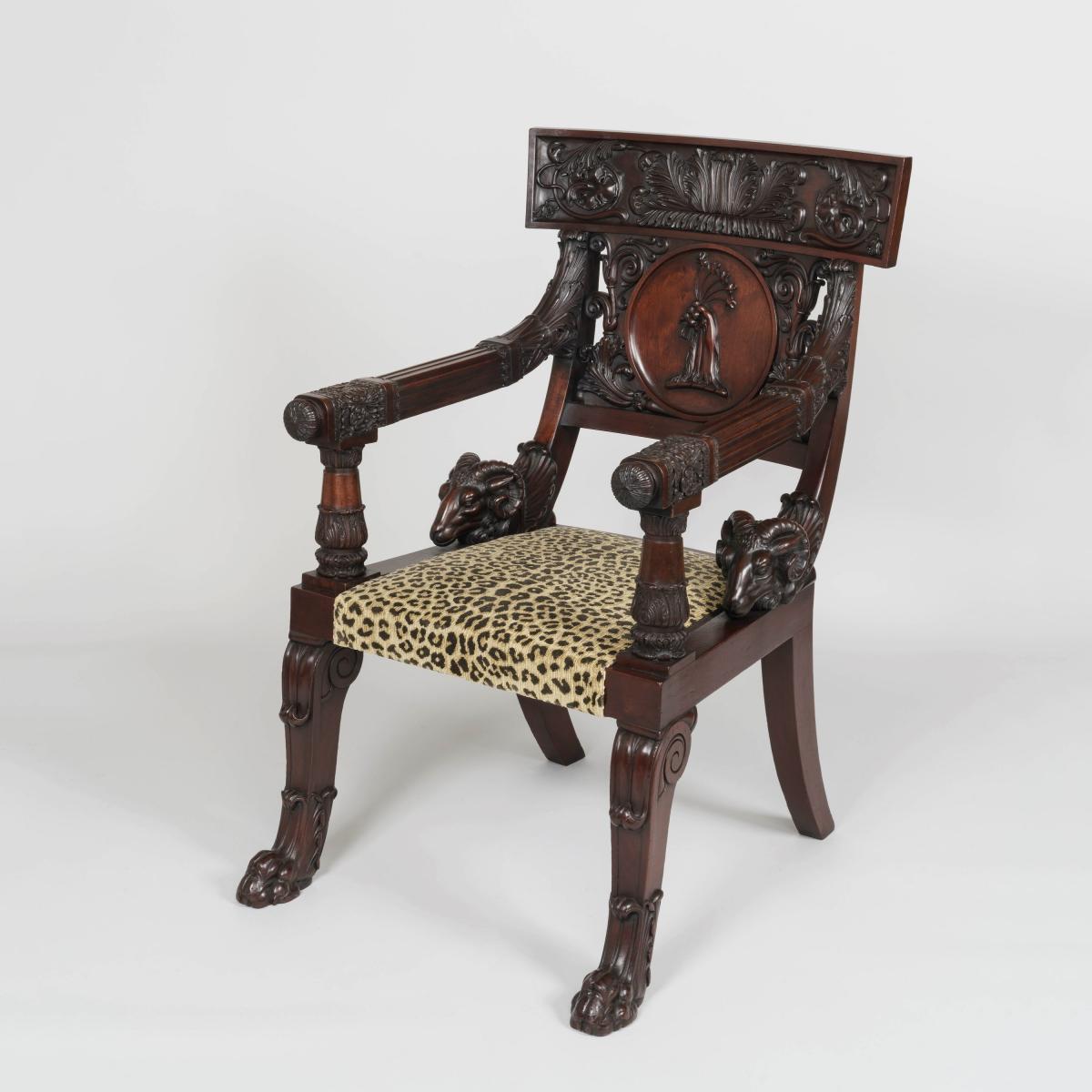
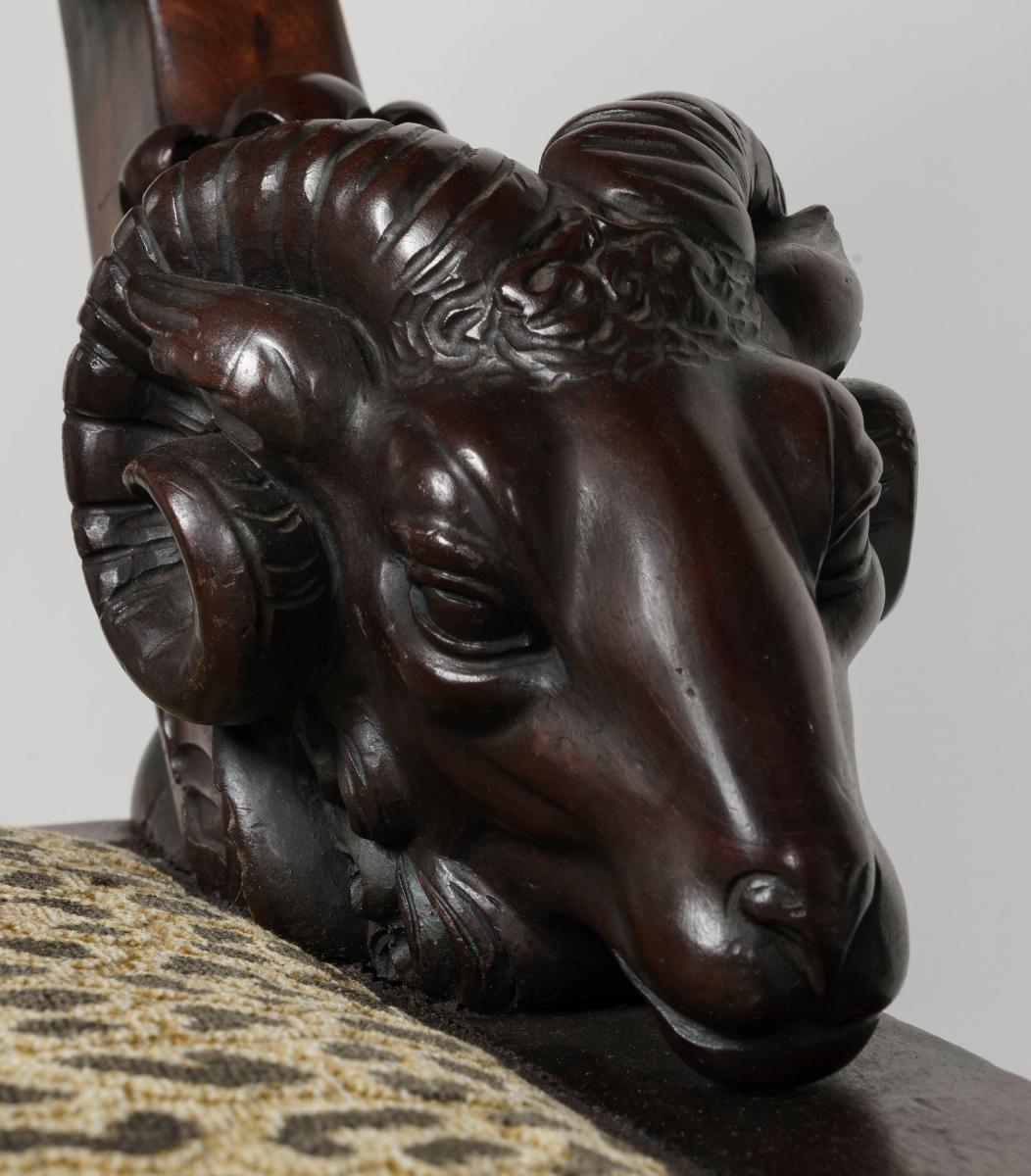
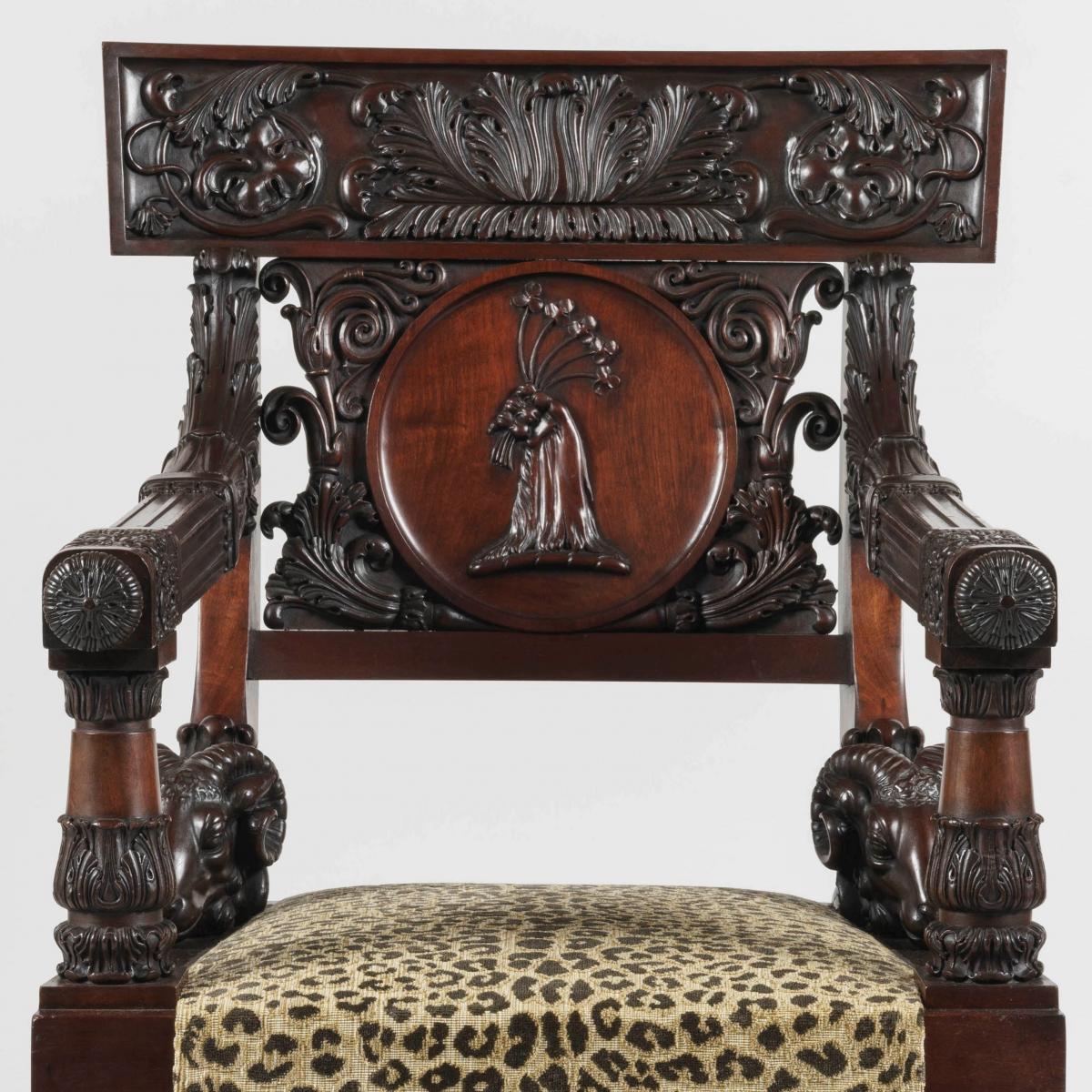
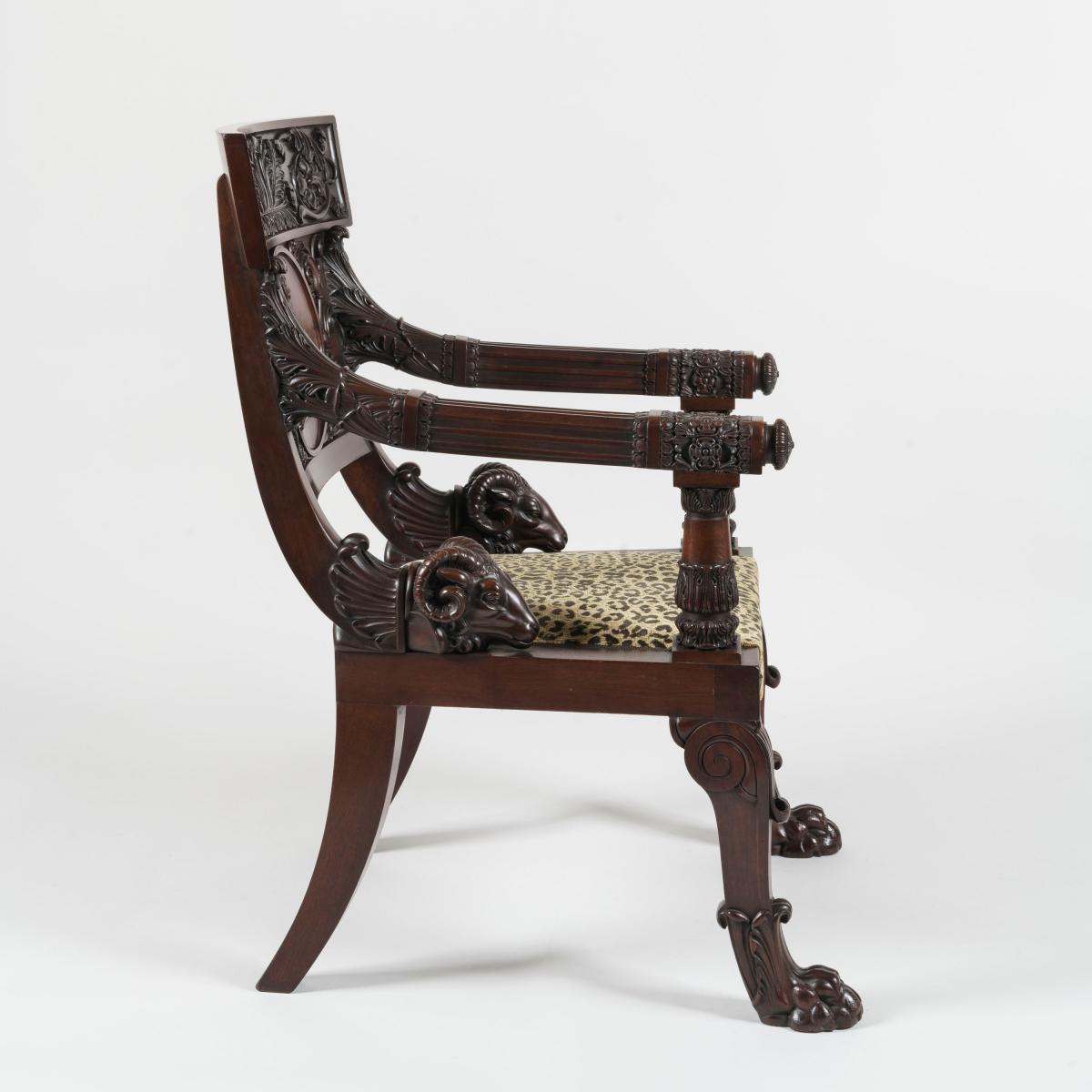
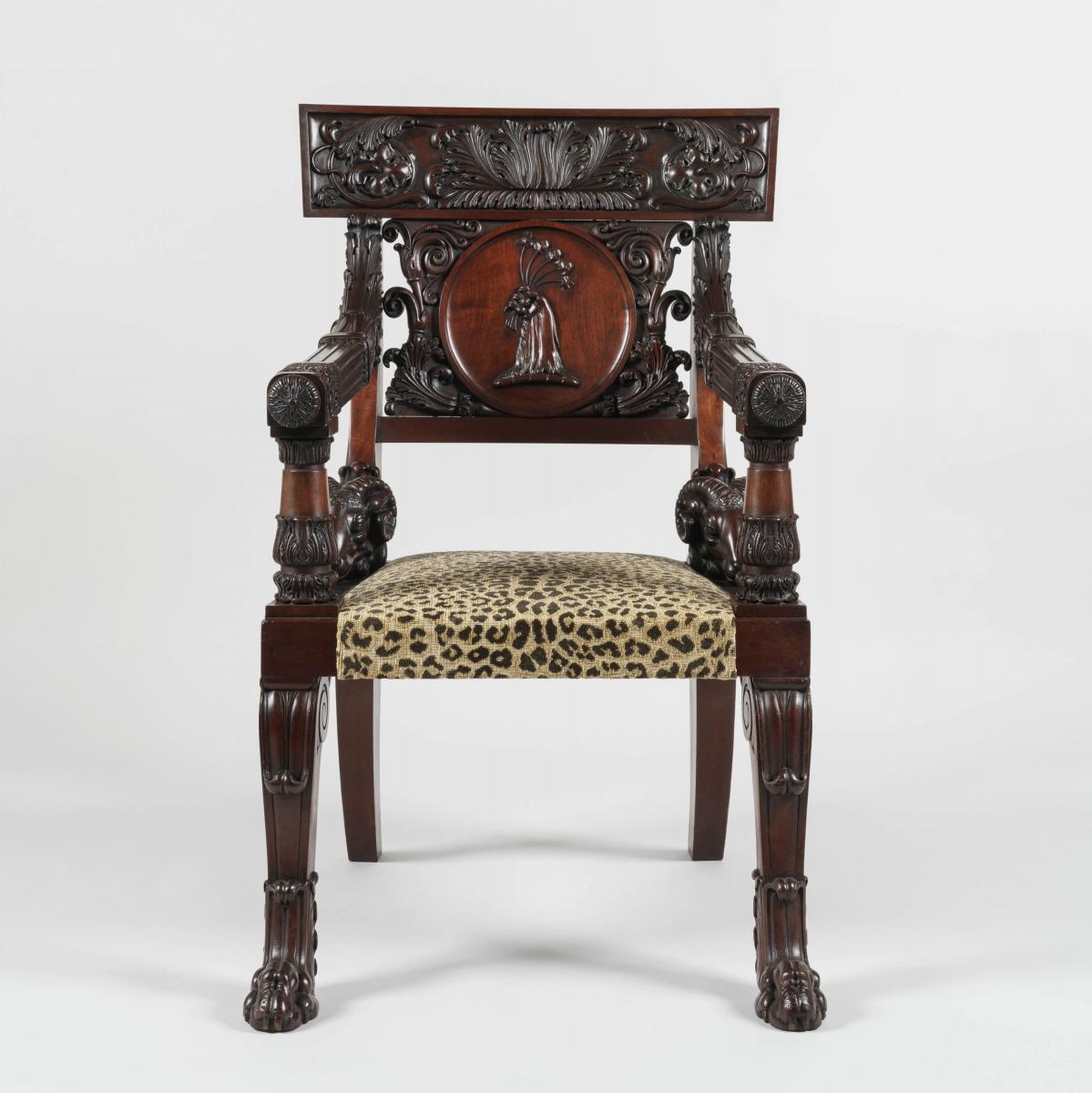
Price on application
This object is eligible for a Certificate of BADA Provenance
The BADA Standard
- Since 1918, BADA has been the leading association for the antiques and fine art trade
- Members are elected for their knowledge, integrity and quality of stock
- Our clients are protected by BADA’s code of conduct
- Our dealers’ membership is reviewed and renewed annually
- Bada.org is a non-profit site: clients deal directly with members and they pay no hidden fees
A Pair of Klismos Armchairs of Important Size
After a design by Thomas Hope
Constructed in a finely patinated Cuban mahogany, dressed with the carved Burnell family crest; rising from claw footed swept and lapetted legs, with sabre legs to the rear; the front arm supports of tapering columnar form, carved with stylised acanthus leaves; the arms reeded, conjoining the back rails which issue from magnificent carved ram’s heads, capped by rounded form scroll and acanthus carved toprails.
Circa 1835
This pair of chairs, along with another in the Metropolitan Museum of Art, is illustrated and discussed in Christopher Payne’s “British Furniture 1820 to 1920: The Luxury Market,” published in 2023, see pp.30-31 (illus. fig. 1.20).
PROVENANCE
The present chairs are identical to an armchair in the Metropolitan Museum of Art, New York (67.63.1) and its identical companion in the Victoria and Albert Museum, London (w.3-1967) . As suggested by Penelope Hunter at the Metropolitan, the armchairs most likely all belonged to a larger set. Some chairs include the signature of “C. Dixwell,” referring to Charles Dixwell. Dixwell was a London “upholder” who was apprenticed to the celebrated furniture maker George Seddon for seven years, and who is recorded to have subscribed to Sheraton's Drawing Book in 1793. His profession included the tasks of upholsterer, furniture repairman, and undertaker. It is likely Dixwell was involved in commissioning, upholstering, and selling the armchairs in the early 19th century.
The Metropolitan Museum credits Thomas Hope as the designer and maker of these striking armchairs. By the second quarter of the 19th century, Hope had cemented his reputation as a designer and interior decorator, and he was dubbed by his contemporaries as the “furniture man” among London’s aristocratic circles. These inventive chairs are a testament to the confidence and ingenuity characteristic of Hope’s mature designs.
LITERATURE
Beard, Geoffrey, and Christopher Gilbert. Dictionary of English Furniture Makers, 1660-1840. Leeds: Furniture History Society, 1986.
Kirkham, Pat. The London Furniture Trade 1700-1870. London: Victoria and Albert Museum, 1988.
Metropolitan Museum of Art (New York, N.Y.). The Metropolitan Museum of Art: Notable Acquisitions, 1965-1975. New York: The Museum, 1975, p.255 (illus.).
Payne, Christopher. British Furniture 1820 to 1920 : The Luxury Market. ACC Art Books, 2023, pp. 30-31 (illus. fig. 1.20).
Dimensions
Dimensions: H: 44 in / 111 cm | W: 27 in / 69 cm | D: 24 in / 61 cmCondition report
Excellent conditionStock number
9393The BADA Standard
- Since 1918, BADA has been the leading association for the antiques and fine art trade
- Members are elected for their knowledge, integrity and quality of stock
- Our clients are protected by BADA’s code of conduct
- Our dealers’ membership is reviewed and renewed annually
- Bada.org is a non-profit site: clients deal directly with members and they pay no hidden fees


